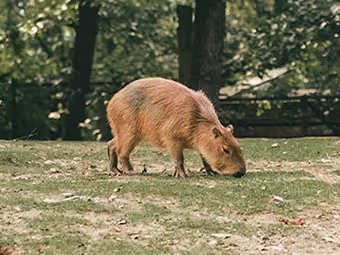Capybaras: Characteristics, Habitat, and Conservation Status
The Capybara: Meet the World's Largest Rodent
Reading time : 1 minute,
Discovery Chepe Id-816-ECO
Published in
09-24-2025

The king of calm. A capybara enjoying a well-deserved nap by the river. Nobody does it better! Photo: Jaime Dantas
Capybaras, also known as carpinchos, are the largest rodents in the world. Their friendly appearance and social behavior have made them remarkable animals both for science and for the communities that live near them.
Characteristics
Capybaras measure between 1 and 1.3 meters in length and weigh between 35 and 65 kilos. They have a robust body, short reddish-brown fur, and partially webbed feet that make them excellent swimmers. They spend much of their time near or in the water.

The Gentle Giant of the Rivers: The Fascinating Story of the Capybara
Photo: giuse
Reproduction
Reproduction can occur year-round in tropical areas. The gestation period lasts about 150 days, and females usually give birth to 2 to 8 offspring. Capybaras live in social groups where babies are cared for communally.
Diet
Capybaras are strict herbivores. Their diet consists of grasses, aquatic plants, and occasionally tree bark. They practice cecotrophy, which means consuming part of their soft feces to extract additional nutrients.
Habitat
Their natural range extends from Panama to Argentina. They prefer wetland environments such as riverbanks, lagoons, and swamps. Water is essential for their survival, providing food, protection, and a way to escape predators.
Conservation status
Currently, capybaras are not endangered, although in some regions they face threats from habitat loss and hunting. According to the IUCN Red List, their status is listed as Least Concern, meaning their populations remain stable across most of their range.
Capybaras are a fascinating example of how wildlife adapts to aquatic and social environments. Observing them in the wild helps us understand the importance of protecting the ecosystems they depend on.
Capybaras: The gestation period lasts about 150 days, and females usually give birth to 2 to 8 offspring. Capybaras live in social groups where babies are cared for communally.
See Also
Discovery Chepe
Most read...















